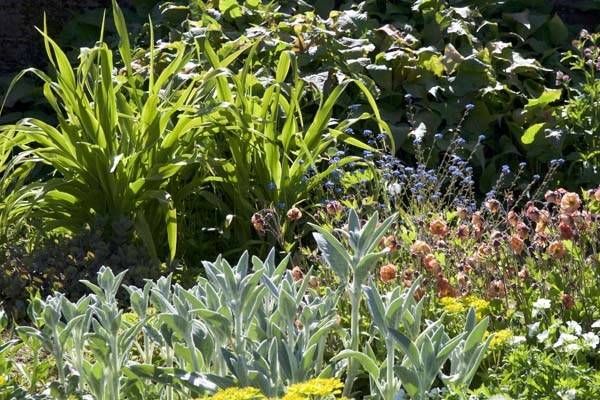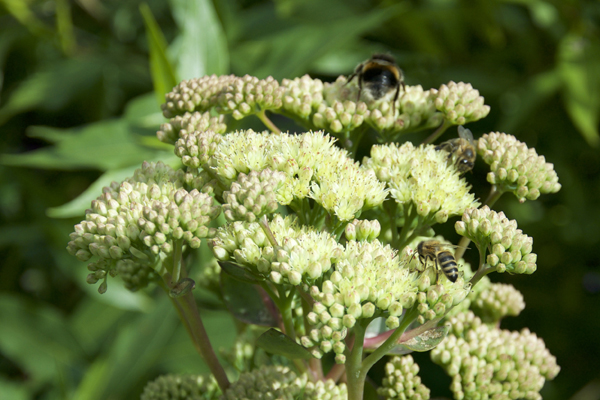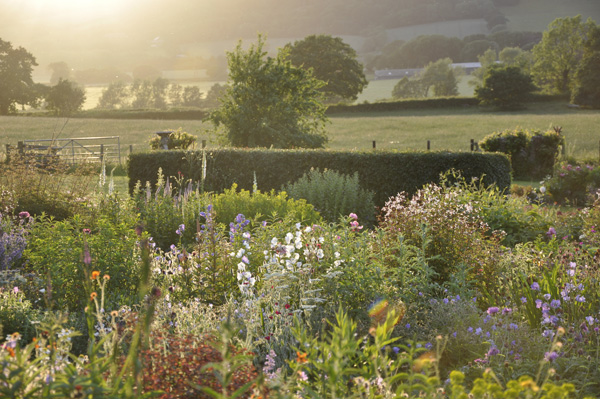The Ultimate Guide to Peonies
Hardy peonies produce some of the most glorious flowers amongst the large and varied world of perennials. The big, often blousy blooms come in a range of colours from white to yellow, pinks of all shades and orange to the deepest reds. Once established, they need very little maintenance and are very long-lived. Place them in a border with other hardy perennials, and they will provide a fantastic display in your garden.
Watch Claire on 'Gardener's World 2022 Winter Special'. If you don't want to watch the whole piece, fast forward to 11 minutes into the show!
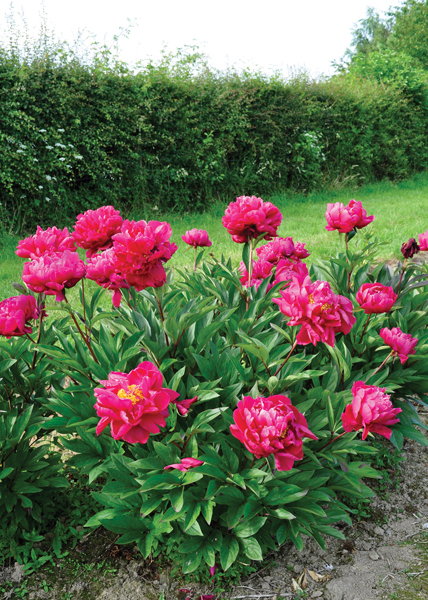
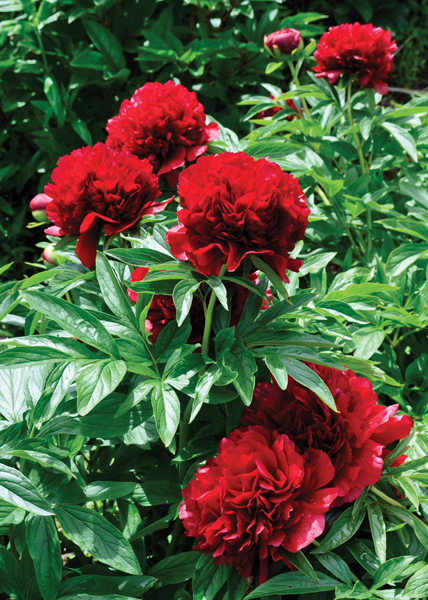
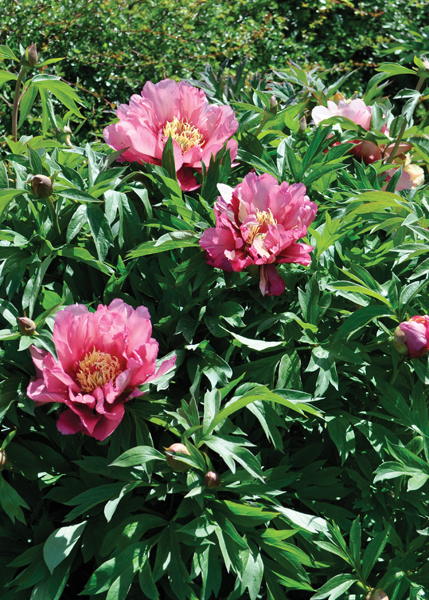

Peony 'Adolphe Rousseau' (Lactflora) P. 'Eliza Lundy' (Hybrid), P. 'Hillary' (Intersectional), P. 'Anglet' (Tree)
Types Of Peony Plants
There are three main types of peony plants, most garden centres will stock one or two types. If you want to buy peony plants from a wider selection, a specialist nursery or peony shop is where you will find the rarer and interesting varieties.
Herbaceous Peonies
These are the most common and popular to get from a peony shop. They start to lose their leaves around the end of summer, eventually nothing will be showing above ground in winter. They are divided into two distinct groups. Peonies in the largest group, Lactiflora and Hybrid peonies.
Lactiflora peonies are the largest group of peonies, these are the ones most commonly found in garden centres. This summer blooming perennial has large, opulent flowers that bloom from early to late June in colours ranging from white to cerise pink, dark crimson and, in more recent years, yellow. There are no true ‘fire-engine’ reds.
Hybrid peonies are the other type of herbaceous peony and are the result of crossing species peonies. I’m proud to be a Plant Heritage National Collection Holder for rare hybrid herbaceous varieties. Unlike Lactiflora peonies, which all have similar mid-green leaves, the foliage of hybrid peonies vary from shiny to dull green, and the leaf shape from round-ended to deeply divided.
Their flower colour is also different and can range from white and pale- to very bright pink, shades of apricot or true red. Many also bloom earlier than Lactiflora types, from late April onwards.
Intersectional Peonies (Itoh)
Also known as Itoh peonies, this is a relatively new group created by hybridising herbaceous with tree (woody) peonies. The leafy stems emerge each spring from the base of the plant and by autumn some have turned woody, while others die back just like herbaceous peonies.
The flowers are very large, usually single or semi-double and range from white, apricot and lilac-pink to true red and yellow. In addition, the petals of some start out one colour, then gradually change in tone as the bloom matures. Intersectional peonies are grown in the same way as herbaceous peonies and bloom at similar times to Lactiflora and Hybrid peonies.
Tree Peonies
These should be more accurately be called ‘woody’ peonies because their form is not a tree but a shrub, with woody stems that remain over winter. The flowers and leaves are typically much bigger than herbaceous peonies, although they bloom at the same time. They are organised into three horticultural groups: Japanese, Chinese and Lutea Hybrids, each creating a different shrubby shape.
Types of Peony Flowers
Peonies that come in various beautiful and dynamic shapes, and these are frequently categorised on an online peony shop to give the customer easy access to the flower type they are looking for. To give a brief overview:
- Single – A single ring of petals around a cluster of stamens
- Double – Multiple rings and layers of petals, reminiscent of a layered petticoat
- Semi-Double – A mix of single and double petal rings, the stamens are always visible
- Japanese – Reminiscent of the single peony, but with an inner mound of ‘staminodes’ that may change colour
When do Peonies Flower?
The peony is typically a summer blooming perennial that provide beautiful flowers from May to late June, depending on the variety. That is not the only gift the peony brings to a garden, in spring the new shoots of fresh leaves are a beautiful tone of rich purple-red. Later, as the leaves change for a short time to fabulous autumn shades.
What is a Bare Root Peony?
When you buy peony plants online, you may see the delivery/potting options set to bare root. That means you will be receiving a bare root peony, without soil or a pot included. It’s better to deliver a peony like this because it’s easier to handle during transit, and it makes planting very straightforward.
Bare Root Peony Planting Guide
Where to Grow Peonies
All peony varieties will grow in most soil types, including clay soils, but they prefer soil that is well-draining. I find they like a slightly moist soil, but not predominantly wet. They require a sunny area in your garden, but they are tolerant of partial shade. Do not mix manure in the soil before planting, as this may rot the eyes of even the most hardy peony.
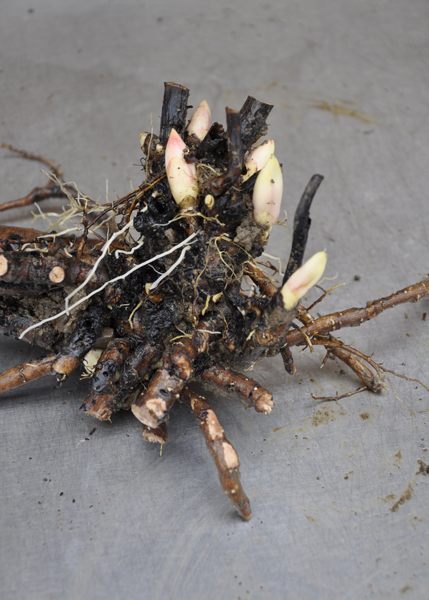
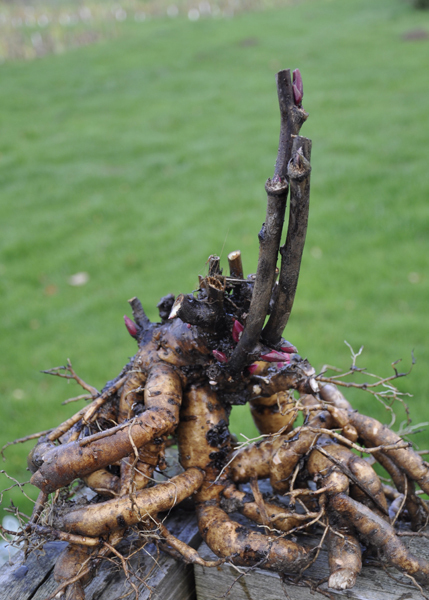
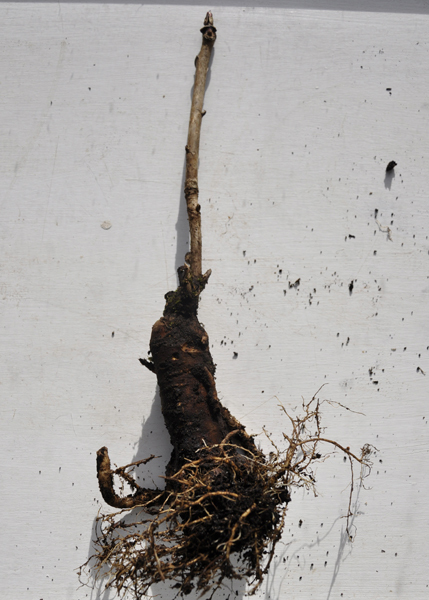
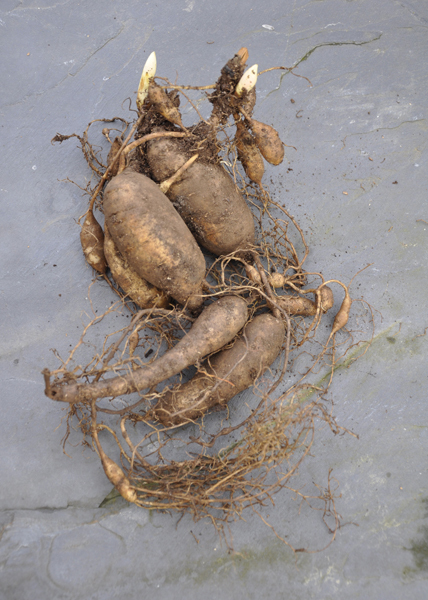
How to Plant Bare Root Peonies
Nothing could be easier, provided a few rules are followed. Simply dig a hole wide enough and deep enough to accommodate the roots. Place the plant in the hole following the planting rules below, and cover with soil. Unless a period of dry weather is forecast, they don’t need watering.
Herbaceous peonies (Lactiflora & Hybrid) need to be planted with the eyes no more than 5cm below the soil surface. If they are planted too deeply the plant may struggle to produce flowers.
Intersectional peonies are planted similarly to herbaceous peonies. Ignore the level of the woody stems and, using the red eyes on the wide crown as your guide to depth, plant these around 5cm below the soil.
Tree peonies are planted in a totally different way to herbaceous peonies, especially if the plant has been grafted. On a grafted plant, the lower section of root will be thicker than the upper, which is the graft. The point where the two sections meet should be at least 8cm below the soil surface, which might mean that very little of the ‘stick’ is visible. Seed-raised peonies, such as Paeonia delavayi, are quite happy planted as deep as you wish.
Caring for Hardy Peonies
Some peonies need support to keep the flower stems from tumbling over. The sturdiest and most elegant are made of metal, but a ring of thick stakes can look attractive when secured at the top with a circle of intertwined willow stems. Supports should be put in place before the flower stems become too tall.
I rarely fertilise my peonies but if you do, never use fresh farmyard manure. If this sits too near to the peony stems, it will cause them to rot. Make sure you use organic, very well-rotted manure and apply in a ring at least 15 cm from the plant and before the new shoots appear. Alternatively, apply a general-purpose granular fertiliser according to the instructions.
Pruning & Tidying
Herbaceous peonies can suffer from fungal diseases, so it is important to remove older stems and flowers. Once the plant is looking tatty, the leaves, and the old flower stems should be cut down and removed. I generally do this in spring when the new shoots start to show. Here in mid-Wales, that can be as early as late February.
Intersectional peonies are typically disease free, but to keep a plant looking tidy you can always remove leaves when they drop in autumn. I also prune the woody stems before the leaves start to emerge in spring, so the clump looks neat and domed, rather than an unbalanced mix of a few tall and many shorter stems.
Tree peonies retain some or all of their leaves and will provide winter shelter for birds and small creatures. If you wish to tidy up the plant in autumn, this can be done by simply snapping the leaves off the plant. However, the old foliage is much easier to pull off in spring when the new leaf shoots start to grow. Spring is also the time to tame a plant that has lost its shape or grown too big. Use secateurs to prune the woody stem just above a red leaf bud. Take out the amount of stem you need to create a neat shrub, but not so much that the pruned stem is left with no leaf buds. Removing one or two stems entirely won’t harm the plant.
Pests
As previously mentioned, tree and herbaceous peonies can suffer from fungal infections that cause the peony to wilt. Spores persist in the soil over winter, so it's important to remove old leaves and infected material as soon as possible to prevent spores from spreading.
Mealybugs are small, white, woodlouse-like insects that like to target new green growth on your peony. Fortunately, they are easy to spot.
While ants will congregate on the buds of peony blooms, there’s nothing to worry about, they only feed on the naturally produced sap and leave once the flower blooms. The last thing to watch for is powdery mildew, which can appear in dry weather.
What Flowers are Peonies Great With?
Peonies tend to steal the show in a garden border, so I recommend summer blooming perennials of complimentary colours to add contrast. As they like sunny, well-drained soil, the best perennials to plant them with should share the same preferences. Hardy salvias, bearded irises, geraniums
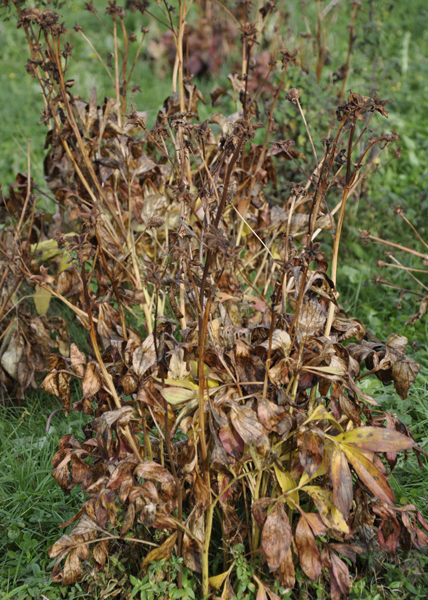
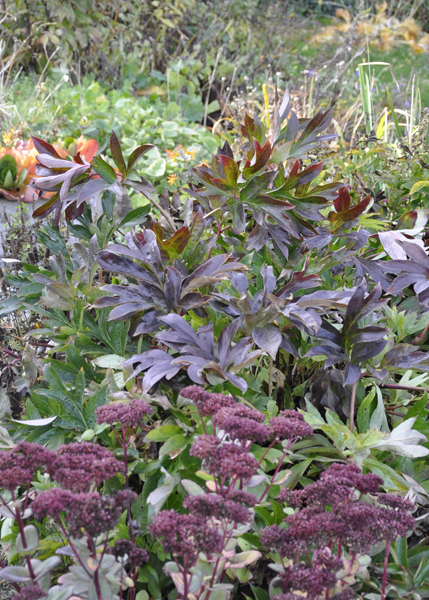
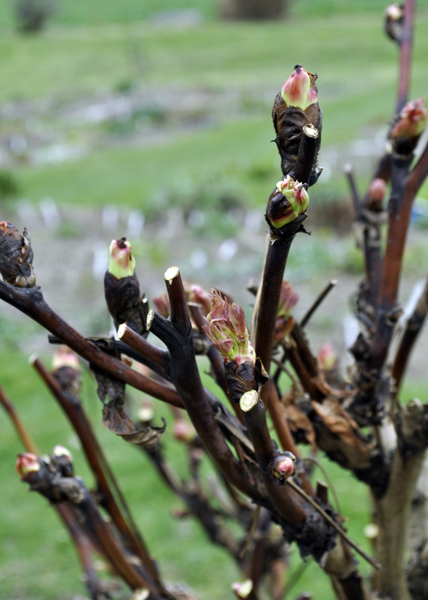

Watch Claire on 'Gardener's World 2022 Winter Special'. If you don't want to watch the whole piece, fast forward to 11 minutes into the show!
